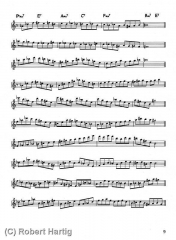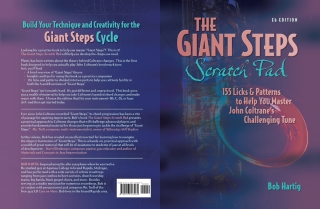(Continued from part 1.)
During my eighth-grade year, my father’s horn opened the doors to a formative experience in my life. It began when a fellow junior high school classmate, Steve Afendoulis, asked me if I would like to play in a band he was forming. Steve being a drummer, I thought he was talking about a rock band.
Now, I have to be honest: Much as I enjoyed playing the saxophone, rock music was in its psychedelic heyday, and what I really aspired to be was the next Jimi Hendrix. The only hitch was that I didn’t play guitar. Still, while I’d never heard of Dave Sanborn, I thought that maybe I could carve my niche as a rock saxophonist. I’d be cool, and “cool” was a quality I lacked and desperately wished to cultivate. So I told Steve to count me in.
Thus it was that I wound up playing lead alto in a 17-piece dance band called the Formal Aires. It was not exactly Woodstock material. Tommy Dorsey, Duke Ellington, Count Basie, Louis Armstrong … good heavens! I was playing my parents’ music! Whatever image it might project for me, “cool” didn’t figure in.
I hadn’t a clue what an amazing experience I had walked into. What I did know was that, cool or not, I really enjoyed the weekly rehearsals with my 16 other junior high and high school bandmates. They came from several schools around the Grand Rapids area, and even as our athletic teams clashed, we harmonized.
Steve’s dad, Gus Afendoulis, served as the band’s manager. He owned a tuxedo rental and dry cleaning shop on Michigan Street in Grand Rapids and also wrote a weekly column on bridge for the Grand Rapids Press. Being well-connected, Gus managed to secure frequent weekend and holiday gigs for the band at top country clubs, wedding receptions, and social and community events throughout West Michigan. I’m quite sure it was Gus who purchased our music library for us. Owning his own tux shop, he saw to it that we were properly outfitted in formal attire. He secured a couple of music directors who worked with us during weekly rehearsals, helping us to properly interpret the music and develop our sound. Above all, Gus loved us kids. He was a sweetheart of a guy who made it all happen for us and did so in such a low-key way that his immense significance never dawned on me till years later.
I mentioned that the band had two music directors. These men, Sid Stellema and Ted Carino, were the guiding forces for the band. Ted, an alto saxophonist with prior big band experience, was there every week, walking us through the charts, rehearsing us, encouraging us, shaping our sound. Ted was the person who first made me aware that not all mouthpieces are created equal. I had been playing the stock mouthpiece that came with dad’s horn. With its small tip opening, it was not designed to move a lot of air, and it gave me a feeble, overly dark sound with little volume or projection. It was by no means a lead alto mouthpiece.
One night, Ted pulled me aside and handed me a box containing a brand-new Brillhart mouthpiece. I put it on my horn and experienced an epiphany. This piece was so much louder! And its brighter tone gave me the edge I needed for the first alto chair.
Sid Stellema also helped rehearse the band. His involvement wasn’t as extensive as Ted’s, but his experience as an arranger provided us with invaluable input. Sid also guided me in writing my first–and only–successful big band chart: an arrangement of “Auld Lang Syne.” In those days I knew nothing of music theory, and my inner ear was informed by rock harmonies rather than jazz. Thanks to Sid’s coaching, though, I came up with an acceptable arrangement of the Guy Lombardo classic, which the band played every New Year’s Eve henceforth and eventually passed down, along with the rest of its book, to its successor, the Stardusters.
The Formal Aires was a profoundly important part of my musical learning curve. Through it all, my father and mother faithfully drove me to the weekly rehearsals. The saxophone that Dad was unable to play now rested in the hands of his oldest son, and Dad could hear both it and me coming to life, doing what we were created to do.
I played in the Formal Aires, and afterward the Stardusters, all the way through high school and even into my early college days. I think the Formal Aires must have played at every country club in West Michigan, and not just once, but frequently. We had the New Year’s Eve gig locked in every year at the Cascade Country Club. The band was a great way for us kids to make a bit of money playing music–and above all, we had fun! To Steve, to Gus, to Ted, to Sid, and to all my old bandmates: Thanks. I’ve never forgotten.
The Formal Aires and the Stardusters steeped me in the classic swing band literature and gave me the confidence I needed as a lead alto player. Too much confidence, really. I was naive as to how much I had yet to learn …
(To be continued.)






